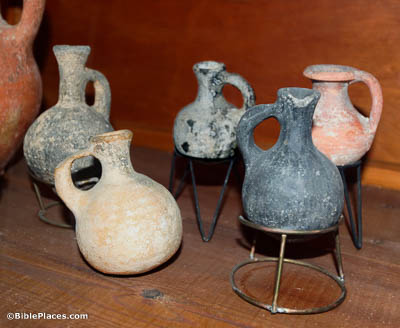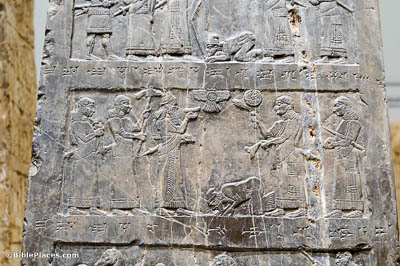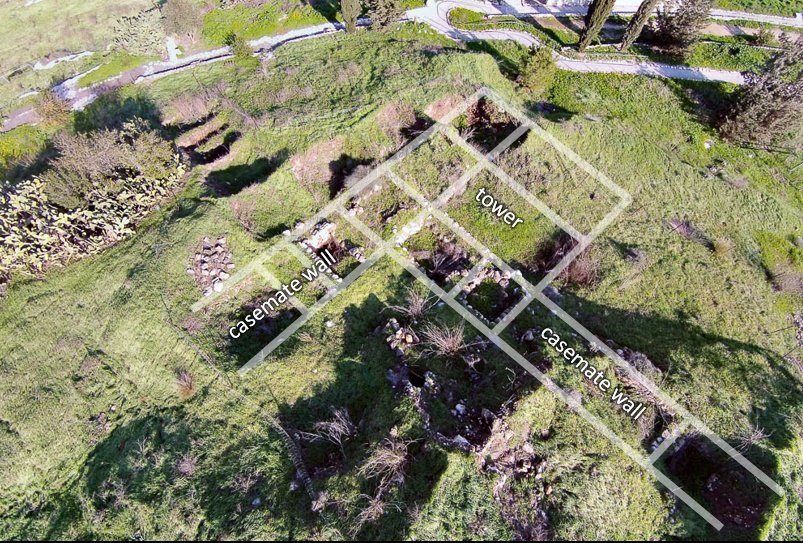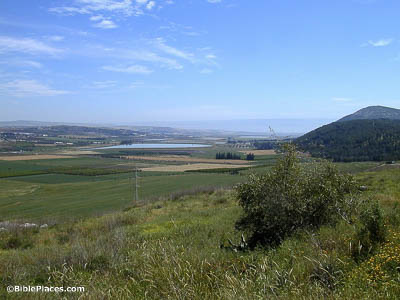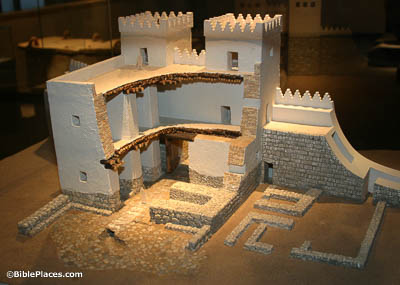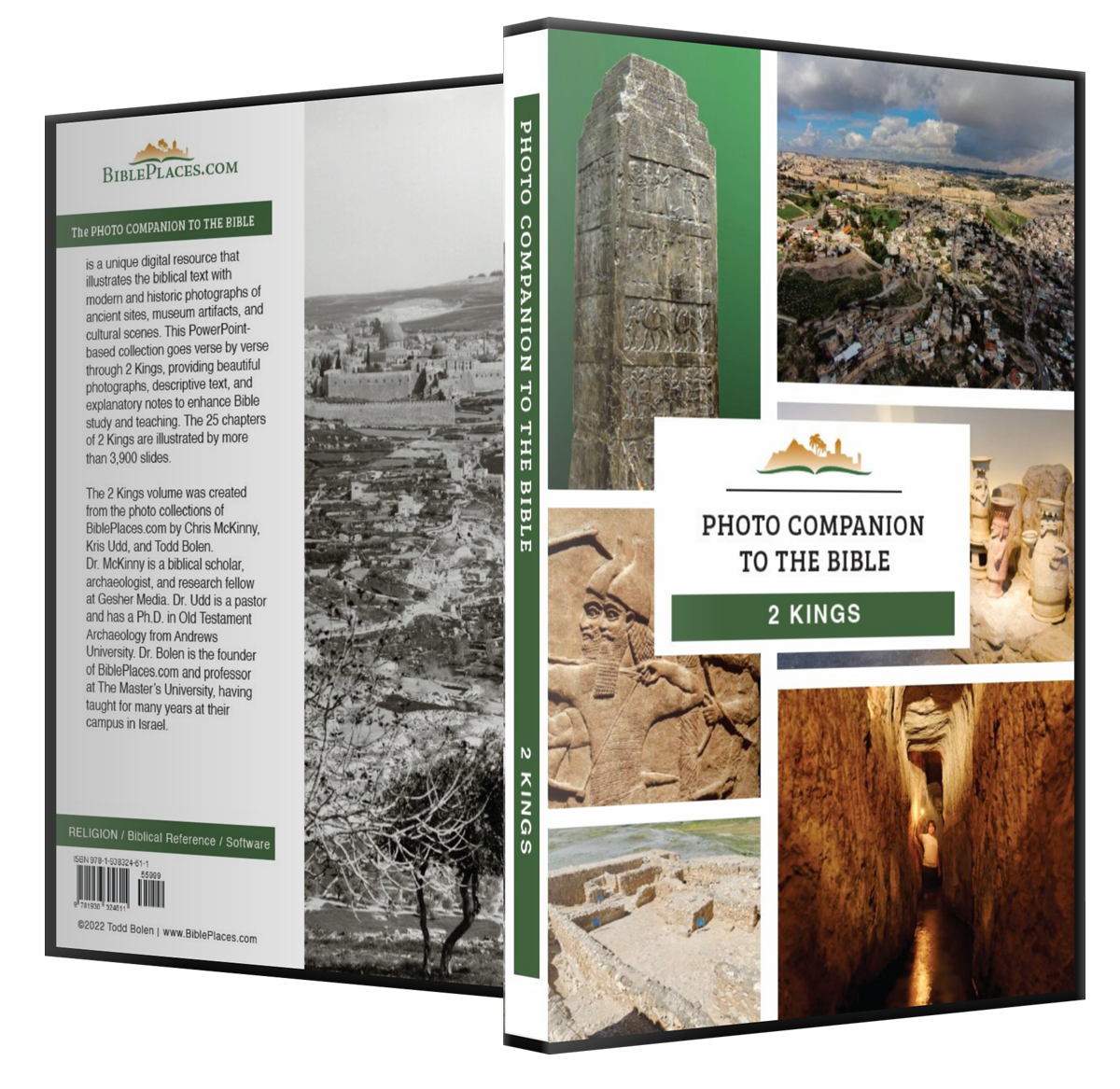He said, “Gird up your loins and take this flask of oil in your hand, and go to Ramoth-gilead” (2 Kings 9:1).
The flask of oil seems to be distinct from the “horn” of oil used for anointing in other passages (1 Sam 16:13; 1 Kgs 1:39), although the function seems to be identical. Small juglets like the ones in this photo were commonly used to hold olive oil, and this would have been an ideal size for a runner to carry. This display was photographed at the Pontifical Biblical Institute Museum in Jerusalem.
